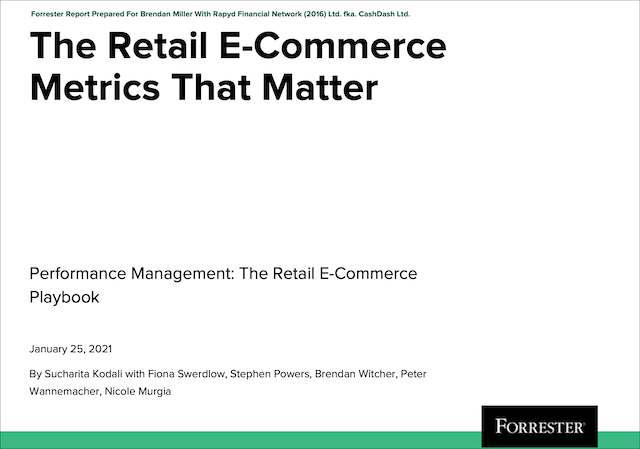When it comes to eCommerce platforms, which is better: Magento vs. Prestashop?
What are the pros and cons of Magento vs. Prestashop? The choice doesn’t have to be complicated. We break down the comparison to help you choose the best eCommerce platform for your business.
Both large enterprises and small businesses need to make an educated decision about what eCommerce platform to use on their website. There are several goals and capabilities to consider when comparing Magento vs. Prestashop in your search for the perfect eCommerce platform.
Magento vs. Prestashop: Get To Know the Platforms
The Prestashop platform is ideal for small to medium-size business owners who prefer their eCommerce platform easy to navigate with many out-of-the-box options and themes. Magento works best for enterprises that will utilize more technical capabilities, need to handle a large number of customers at a time, and see a future where scalability is a major consideration. Magento offers a free version that is suitable for smaller businesses, but it focuses its offerings on store owners that wish to scale rapidly.
Comparing Pricing and Costs: Magento vs. Prestashop
- Magento – Magento pricing starts with its free version, Magento Open Source. Despite it being free, subscribers typically spend at least $20/month for hosting. Magento’s paid versions, Magento Enterprise and Magento Commerce Cloud, base their costs on gross sales revenue. Businesses can expect to pay anywhere from $22,000 – $125,000 annually for either of these options. Users should budget for extra costs on themes, extensions, and the necessary web development to get any version of Magento up and running. Transaction fees are typically 2.9% + $0.30 per transaction.
- Prestashop – Prestashop merchants can choose a free open-source edition, and get relatively inexpensive hosting through one of their partner hosting partners. Prestashop does not offer hosting capacities itself. Unlike Magento, all themes come with a cost of about $70 – $400. There are options for free add-ons alongside paid add-ons. While almost certainly more affordable than Magento, merchants should be sure to clearly understand the capacities they need before signing up for Prestashop, as the cost of paid add-ons can add up.
- Transaction Fees – Prestashop offers PrestaShop Checkout for payment processing, however, third-party payment plugins can offer more competitive pricing and support more countries and payment methods. Rapyd offers highly competitive pricing for European merchants using Prestashop. European businesses will pay 1.2% + €0.25 per transaction. UK-owned businesses can expect to pay 0.5% per transaction + £0.10, while businesses domiciled in Ireland will pay 0.5% + €.12 for European cards. While Prestashop eCommerce platform is the less costly option for larger enterprises, it also offers fewer capabilities and is unable to scale significantly as your ecommerce site grows. With the exception of scalability, small businesses can expect similar capabilities and pricing between Magento vs. Prestashop.

Merchant and Customer User Experience: Magento vs. Prestashop Comparison
- Magento – Magento excels in features, customization, and scalability. A web developer is a necessity for setup and maintenance, as it is not a platform for beginners. There is no customer support for Magento Open Source, though there is a very active global community that may, in some cases, replace the need for it. Customers of Magento Commerce will find satisfactory customer support available via online portals and chat.
- Prestashop – the Prestashop checkout experience will differ depending on the payment plugin you select. Generally, Prestashop wins high ratings on design, extensions, development, and payment processing. You can join user forums for support, however, for official, detailed support from Prestashop, you’ll need to pay. Reviewers report their support as limited and expensive, and many merchants opt to hire a web developer to utilize the platform.
Supported Payment Methods and Supported Countries
Magento and Prestashop both let users accept a wide range of payment methods while supporting countries all around the world. However, supported countries and payment methods can vary widely from one payment plugin to the next. That’s why you’ll need to ensure that businesses based in your country are supported by your Magento payment plugin or Prestashop addon.
- Magento – With Magento’s default settings, you can accept credit cards (via payment plugins), checks/money orders, bank transfers, accept coupons or discounts at checkout, and purchase orders. However, bank transfers can be enabled only for certain countries in your settings. Magento only supports shipping in a select number of countries. Rapyd’s Magento plugin supports 50+ countries, but some Magento payment plugins will only support only a handful of countries. If you are doing business globally, you must confirm that your Magento payment provider supports all the countries where you do business.
- Prestashop – Prestashop payment methods come in the form of credit card (via additions like PayPal, Stripe and Rapyd), buy now/pay later, bank transfers, invoice, prepayment, POS, COD (cash on delivery), and subscriptions.
You will also need to double-check that your Prestashop payment provider can support all the countries you do. The Stripe for Prestashop website indicates that only merchants located in France, Italy, Spain, Poland, and Mexico are supported. Rapyd, on the other hand, supports Prestashop merchants in more than 50 countries worldwide and allows you to send payments using many different currencies and payment methods.
The Final Verdict: Which is Better When Comparing Prestashop vs. Magento?
While both eCommerce platforms offer important features, they are not right for every company. Magento is the choice for enterprises that wish to scale and have access to a web development team to set up and maintain the platform. While it is more expensive than Prestashop, with payment options in the higher tiers and the higher volume of customers it can handle on top of its quality plugins make Magento worth the extra cash.
Using Prestashop for eCommerce is an excellent solution for small businesses, or any business expecting less than 100,000 customers on their eCommerce platform at a time. With comparable pricing on the lower level, but less need for technical prowess, Prestashop comes out on top for most small or medium enterprises.
Grow Globally With Rapyd’s
eCommerce Payment Plugins
Rapyd’s eCommerce plugins let you accept hundreds of payment methods, including local and alternative payment methods from all over the globe, giving more customers access to your business.
Serving over 50 countries and with local settlement in whatever currency you choose, it’s one of the most comprehensive options available whether you want to accept international payments in your ecommerce store with Rapyd’s global payment plugins for Magento and Prestashop.
Sources Cited
Bonnard, Louise. (18 02 2020). PrestaShop Keeps Growing Internationally. https://build.prestashop.com/news/prestashop-keeps-growing-internationally/
Hoots, Kate. (21 03 2021). Merchant Maverick. PrestaShop Reviews. https://www.merchantmaverick.com/reviews/prestashop-review/
Hoots, Kate. (21 03 2021). Merchant Maverick. Magento Reviews. https://www.merchantmaverick.com/reviews/magento-review/
Dasha. (20 06 2019). Belvg. How Much Does PrestaShop Cost?. https://belvg.com/blog/how-much-does-prestashop-cost.html
MageFan. (18 10 2021). Magento 2 Payment Methods. https://magefan.com/blog/magento-2-payment-methods
Prestashop. (Unknown). Payment – PrestaShop Modules. https://addons.prestashop.com/en/481-payment
Subscribe Via Email
Thank You!
You’ve Been Subscribed.



